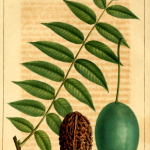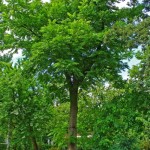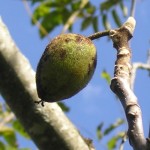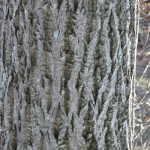Butternut Bark – Juglans cinerea
|
Current Demand = Normal |
Parts Used: Tree Bark |
 |
 |
 |
 |
Family: Juglandaceae
Common Names: Juglans cinerea, Butternussbaum, Lemon Walnut, Oil Nut, White Walnut, Nogal Ceniciento, Noyer Cerdr…
Description
Butternut is a deciduous tree growing to 25m by 20m at a steady rate. It flowers from May to June and the seeds ripen in October to November. The flowers are monoecious (individual flowers are either male or female, but both sexes can be found on the same plant) and are pollinated by the wind. It cannot grow in the shade and prefers light sandy, loamy and clay soils that are well drained.
The bark is light gray and the leaves are pinnate with a downy pubescent and somewhat brighter yellow-green than many other tree leaves. The flowers are yellow-green catkings produced in the spring as new leaves appear. The fruit is a nut, produced in bunches and are oblong surrounded by a green lush. They mature in mid fall.
Planting
The tree prefers a slightly alkaline soil and sheltered from winds. This tree is the most cold resistant of the walnut family.
Plants produce a deep taproot and are intolerant of root disturbance. Seedlings should be planted out into their permanent positions as soon as possible and given some protection for their first few winters since they are somewhat tender when young.
Plants should only be pruned when they are fully dormant in winter or when they are in full leaf, otherwise any cuts will bleed profusely. The butternut grows best on stream banks and well drained soils. It is frequently found in coves, on slopes, in rock ledges and other well drained soils.
The seed is best sown as soon as it is ripe in individual deep pots in a cold frame. You need to protect it from mice, birds, squirrels etc. The seed usually germinates in late winter or the spring. Plant out the seedlings into their permanent positions in early summer and give some protection from the cold for their first winter or two.
The seed can also be stored in cool moist conditions (such s the salad compartment of a fridge) over the winter and sown in early spring but it may then require a period of cold stratification before it will germinate.
Harvesting/Drying
Parts Used: Tree Bark
The bark is best collected in the autumn. The bark is thick and should be dried out of direct sunlight for 10-14 days until brittle.
The trees bear fruit in 6-10 years after planting and the fruit is biennial.
Attributes (Images)
By François André Michaux (book author), Pierre-Joseph Redouté (illustrator), Bessin (engraver) [Public domain], via Wikimedia Commons
By H. Zell (Own work) [GFDL or CC BY-SA 3.0], via Wikimedia Commons
By Modal Jig (Own work) [CC BY-SA 3.0], via Wikimedia Commons
 Root Buyer
Root Buyer